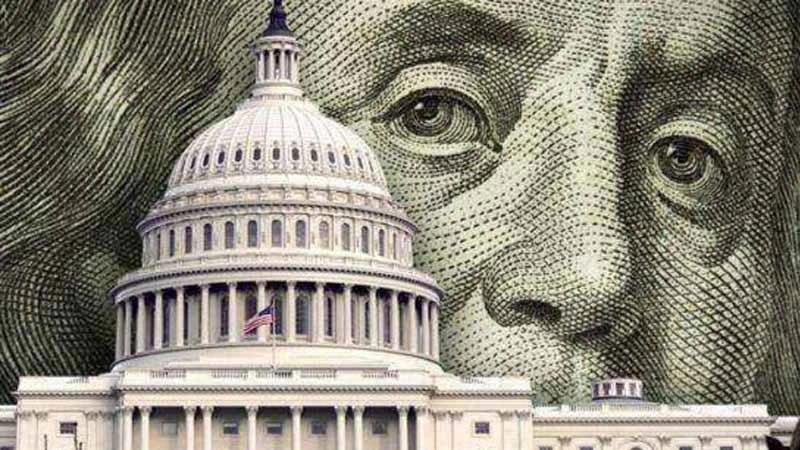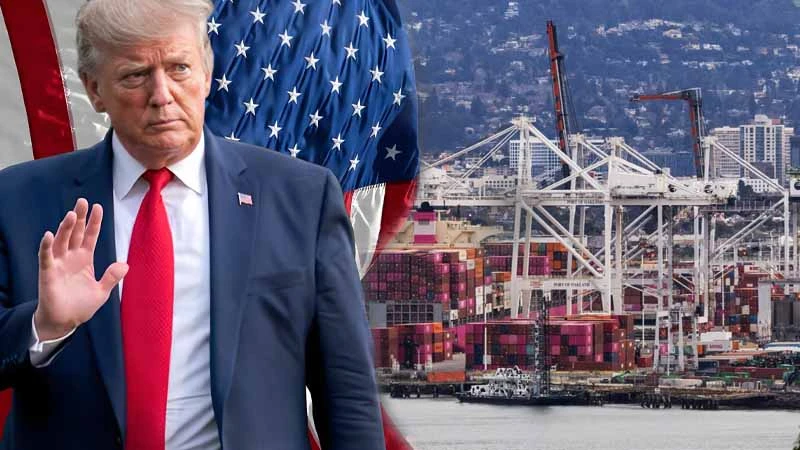Rising Expectations of US Rate Cuts: Federal Reserve Policy and Trump’s Policies May Be the Keys
Recently, as US economic data showed signs of divergence, market expectations for a US interest rate cut have risen again. Federal Reserve Chairman Jerome Powell emphasized in his latest public speech that future policy direction will depend on economic performance. At the same time, the trajectory of Trump’s policies may become another key variable influencing the US dollar’s movement.
Background of Rising US Rate Cut Expectations
Since the second half of 2024, although core inflation in the US has eased, it still falls short of the Federal Reserve’s 2% target. The labor market has remained resilient, but some recent economic data have begun to show signs of weakening consumption and slowing manufacturing activity. For example, January retail sales data came in below market expectations, and industrial production recorded negative growth.
Against this backdrop, investors have started betting that the Federal Reserve will begin its rate-cutting cycle in 2025. According to Chicago Mercantile Exchange (CME) ’s federal funds futures data, the market currently expects the Fed’s first rate cut to occur around July 2025, with a total annual reduction possibly reaching 50 basis points.
Cautious Attitude within the Federal Reserve
Despite rising market expectations, Federal Reserve officials remain generally cautious. According to the minutes of the January Fed meeting, several policymakers believe that cutting rates too early, before inflation clearly falls back to the 2% target, could undermine previous anti-inflation efforts. They also noted geopolitical uncertainties and the potential economic impact of Trump’s policies.
Potential Impact of Trump’s Policies on the US Dollar and Rate Cuts
Notably, Trump’s policies have returned to the market spotlight. Trump recently stated that if re-elected, he would further strengthen trade protectionist measures, including imposing a new round of high tariffs on automobiles, semiconductors, and pharmaceutical products. Such measures could disrupt global supply chains and push up US import prices, thereby creating additional upward pressure on inflation.
If Trump’s policies are ultimately implemented, rising inflationary pressures may limit the Fed’s room to cut rates. However, if companies absorb these costs, profit margins will shrink and the risk of economic slowdown will increase, which may instead prompt the Fed to accelerate its rate-cutting pace.
US Dollar Trend and Capital Flows
Changes in interest rate cut expectations directly affect the movement of the US Dollar Index (DXY). Recently, as rate cut expectations have risen, the DXY has fluctuated downward, once falling below the 106 level in mid-February. However, due to potential uncertainties surrounding Trump’s policies, safe-haven demand has supported the dollar to stabilize at lower levels.
In terms of capital flows, according to financial data provider EPFR, emerging market equity and bond assets have recently seen renewed inflows, with Asian markets benefiting in particular, especially Hong Kong and Southeast Asia, which have performed relatively well. However, if US rate cut expectations reverse or Trump’s policies trigger a new wave of risk aversion, capital flows could reverse at any time.
Asian Market Responses under Rate Cut Expectations
In Asia, US rate cut expectations have significant implications for capital flows and exchange rate stability. For example, since the Hong Kong dollar is pegged to the US dollar, a US rate cut could drive Hong Kong Interbank Offered Rates (HIBOR) lower, helping ease financing pressures in the property market.
In addition, countries such as Singapore and South Korea may also benefit from US rate cuts. South Korea, in particular, export companies will benefit from the export competitiveness boost brought by the moderate depreciation of the Korean won. Below is a table summarizing the potential impact of US rate cuts on selected Asian economies:
| Country/Region | Exchange Rate Impact | Economic Growth | Market Reaction |
| Hong Kong | Hong Kong dollar remains stable | Property market recovery | Property market recovery |
| Singapore | Singapore dollar appreciates moderately | Trade improvement | Stock market stable |
| South Korea | Korean won may slightly depreciate | Export recovery | Stock market benefits |
Summary
Overall, whether the US will cut interest rates still depends on the performance of US economic data, while the Federal Reserve’s policy adjustments will consider inflationary pressure and the labor market condition. In addition, the uncertainty of Trump’s policies has undoubtedly increased market caution regarding the direction of the US dollar and Federal Reserve policies.
The interplay among US interest rate cuts, Federal Reserve policy, and Trump’s policies will have a profound impact on global markets, particularly in Asia. In the coming period, US economic data, the Federal Reserve’s stance, and Trump’s policy direction will collectively determine the trend of the US dollar and global capital flows. Investors need to pay attention to the benefits of interest rate cuts while also being vigilant about the new risks that trade protectionism may bring, maintaining flexibility to cope with potential market volatility.
Frequently Asked Questions
Q1: What is 25 basis points?
25 bps (25 basis points) refer to 0.25% (a quarter of a percentage point).
In finance and monetary policy, “basis points” are a commonly used unit to express changes in interest rates or other percentages. 1 basis point equals 0.01% (1/100 of a percentage point).
Therefore, 25 basis points equal 0.25%. For example, if an interest rate increases from 5.00% to 5.25%, it has risen by 25 basis points.
Q2: When will the Federal Reserve cut rates?
According to Chicago Mercantile Exchange (CME) Fed Funds futures data, the market currently expects the Federal Reserve’s first rate cut to possibly occur in July 2025, with a total rate cut of around 50 basis points (0.5%) for the year. However, Fed officials emphasize that rate cuts must meet two key conditions:
Sustained inflation decline: Core inflation must clearly approach the 2% policy target.
Economic data validation: Labor market resilience, consumer spending, and manufacturing activity must be monitored. In addition, geopolitical risks and the potential impact of Trump’s policies may also be considered in decision-making.
Q3: What does Fed mean?
Fed is the abbreviation for Federal Reserve (US Federal Reserve System), the central bank of the United States. It is responsible for formulating and implementing monetary policy, ensuring the stability of the financial system, and promoting healthy economic growth.
Main functions of the Federal Reserve:
Monetary policy: Adjusting interest rates (such as the federal funds rate) to control the money supply, affecting inflation, employment, and economic growth. The Fed typically uses rate cuts and rate hikes to regulate economic activity.
Financial system stability: Acting as the lender of last resort, the Fed provides liquidity to commercial banks and other financial institutions during financial crises to prevent banking system collapse.
Bank supervision: Regulating banks and financial institutions in the US to ensure they meet capital and liquidity requirements, enhancing the stability of the financial system.
Promoting employment and stable prices: One of the Fed’s goals is to maintain inflation at an acceptable level while maximizing employment opportunities, achieving long-term economic stability.
Structure of the Federal Reserve:The Fed consists of 12 regional Federal Reserve Banks located in different US cities. Its Board of Governors, headquartered in Washington, D.C., is the decision-making body responsible for setting policies and overseeing the entire system. The Fed Chair is the highest-ranking official, responsible for leading meetings and implementing policies.
Importance of the Federal Reserve:The Fed’s decisions have a profound impact on the global economy, particularly as its monetary policies (such as interest rate adjustments) influence global capital flows, exchange rate fluctuations, and investor sentiment.
Related articles
-
Since 2025, global financial markets have continued to focus on the monetary policy trends of the US Federal Reserve (Fed) and movements in the US Dollar Index. As a barometer of the international market, the performance of the US Dollar Index (DXY) directly affects asset prices and capital flows in...2025 年 3 月 18 日
-
2024 Q4 US Nasdaq Index plunged 3.6%, while the Hang Seng Tech Index fell 4.2% simultaneously, highlighting that the linkage between the two markets has deepened to the level of capital flows. Facing the Federal Reserve’s policy swings, the tech industry’s cyclical shifts, and rising geopolitical risks, Hong Kong stocks...2025 年 2 月 21 日
-
In February 2025, Donald Trump's 25% tariff on imported cars triggered an instant earthquake in the global supply chain. This trade policy, which has been labelled “America First 2.0", has not only forced multinational car companies to urgently reorganise production, it has also pushed the price of precious metals past...2025 年 2 月 21 日













